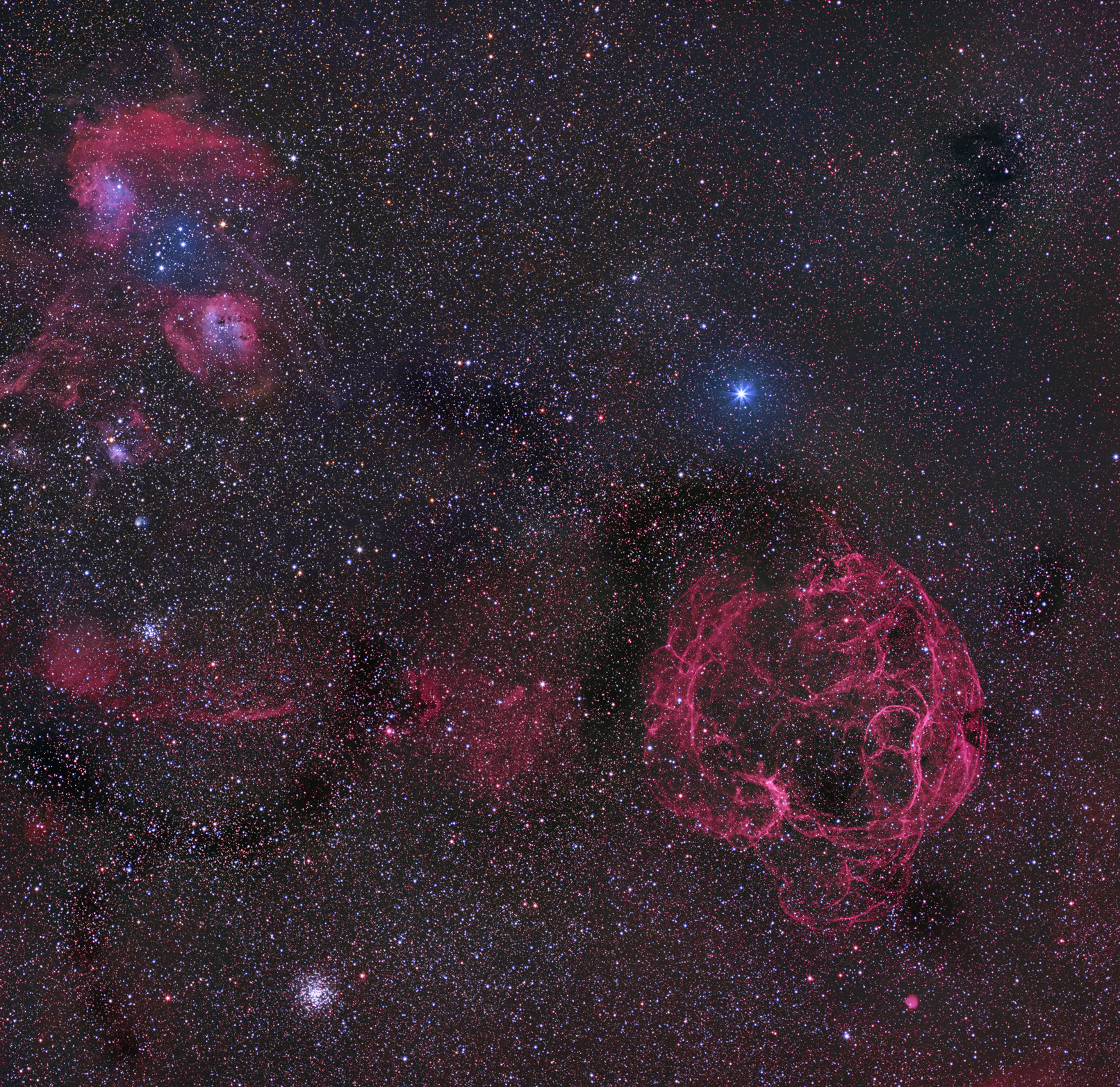Auriga Widefield (including Simeis 147 and Flaming Star
Nebula)
Approximate
Position:
RA:
05h 28m 51s (J2000)
Dec:
30degrees 54' 40" (J2000)
Description:
This
is a widefield view (approximately 11 degrees x 11 degrees) of an
interesting region in the constellation Auriga (The Charioteer), taken
on December 29 and 30, 2018 using a Pentax 200mm lens and the U16M CCD
camera. This is a very large field of view, with a diagonal
spanning approximately 15 degrees, which would enclose about 30 full
moons!
The constellation Auriga is host to a wide swath of Ha emission nebulae
visible during the winter in the Northern Hemisphere, including IC405
(Flaming Star Nebula) and IC410,
as
well as IC 417
and NGC1931
shown above in the upper left quadrant. More information about
this region, including the origin of the hot O-type star AE
Auriga that is responsible for the blue reflection component of IC405, may
be found on APOD.
One of the most interesting emission nebula in this field is Simeis 147, also
referred to as the "Spaghetti Nebula" by some, located in the lower
right portion of the field. The complex, intertangled filaments
of this faint supernova remnant are fun to reveal during image
processing. Several other interesting objects are present in the
image above, including the bright, blue star Elnath (also
known as Beta Tauri and Gamma Aurigae) and the famous open star
clusters M36 and M37 (please use this link for
a smaller version with labels).
More
information about this region may be
found at Rob Gendler's website for Simeis 147
and IC405.
Photographic
Details:
Dates: Pentax widefield: December 29 and 30,
2018
Scope: Pentax 200mm lens
Autoguider: SBIG ST-402 with
60mm guidescope, focal length 227mm
Camera: Apogee U16M at -20C, with
7 position 50mm square filter wheel (Apogee FW50-7S)
Filters: Baader
RGB and Ha filters, 50mm square
Exposures: Ha, 6 hours; R, 2 hours; G, 2 hours; B, 3
hours, all unbinned.
Post-processing:
Calibrated, aligned, and stacked in Maxim, followed
by DDP
in ImagesPlus (IP). Further processing in Photoshop CS (16
bit format). I
also used my older data from 2007, 2008, and 2012 to
complement certain regions of this field of view.
Please
note: Graphics on this website
may not be reproduced without author permission.
Back to Nebulae
Home


